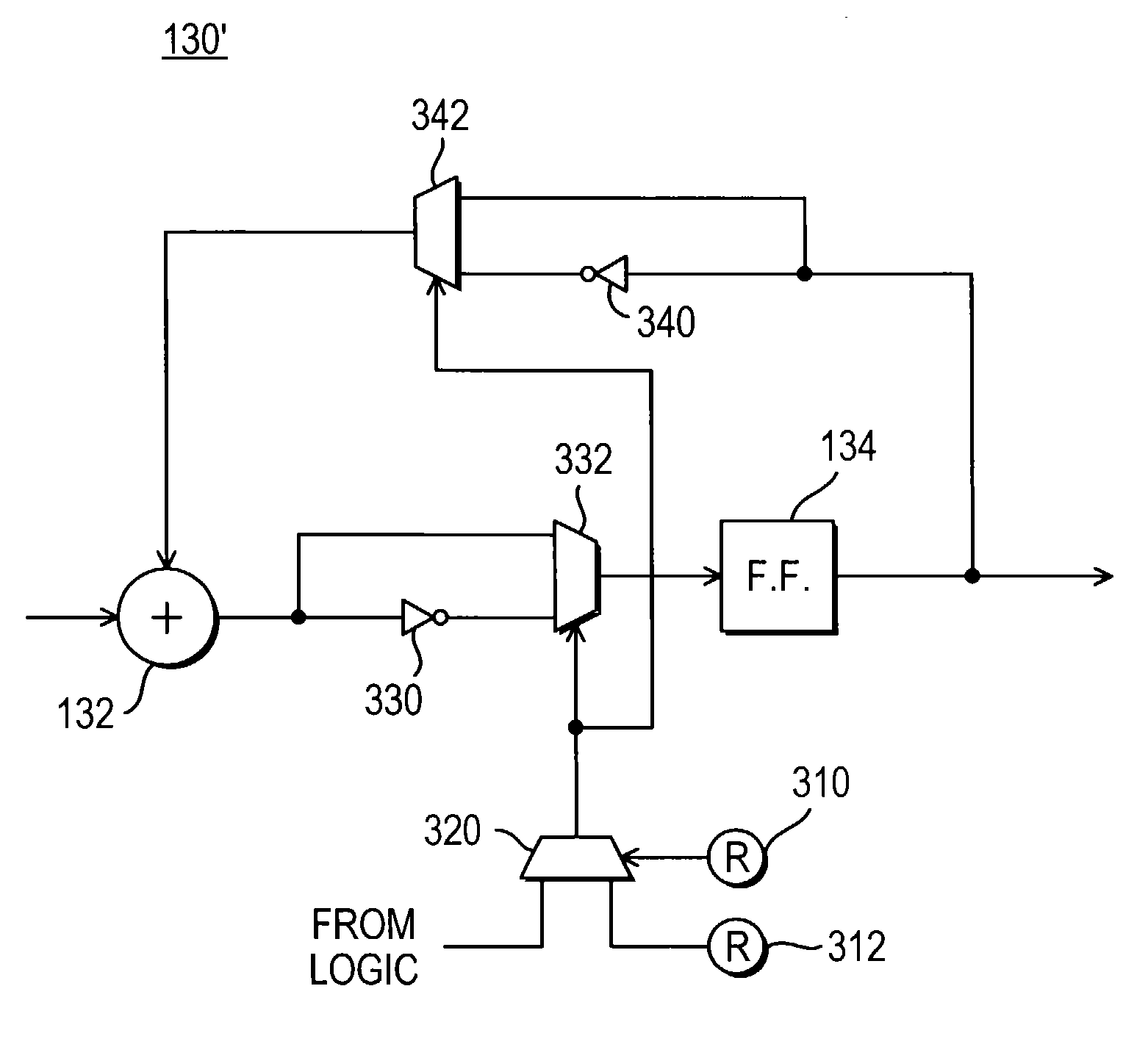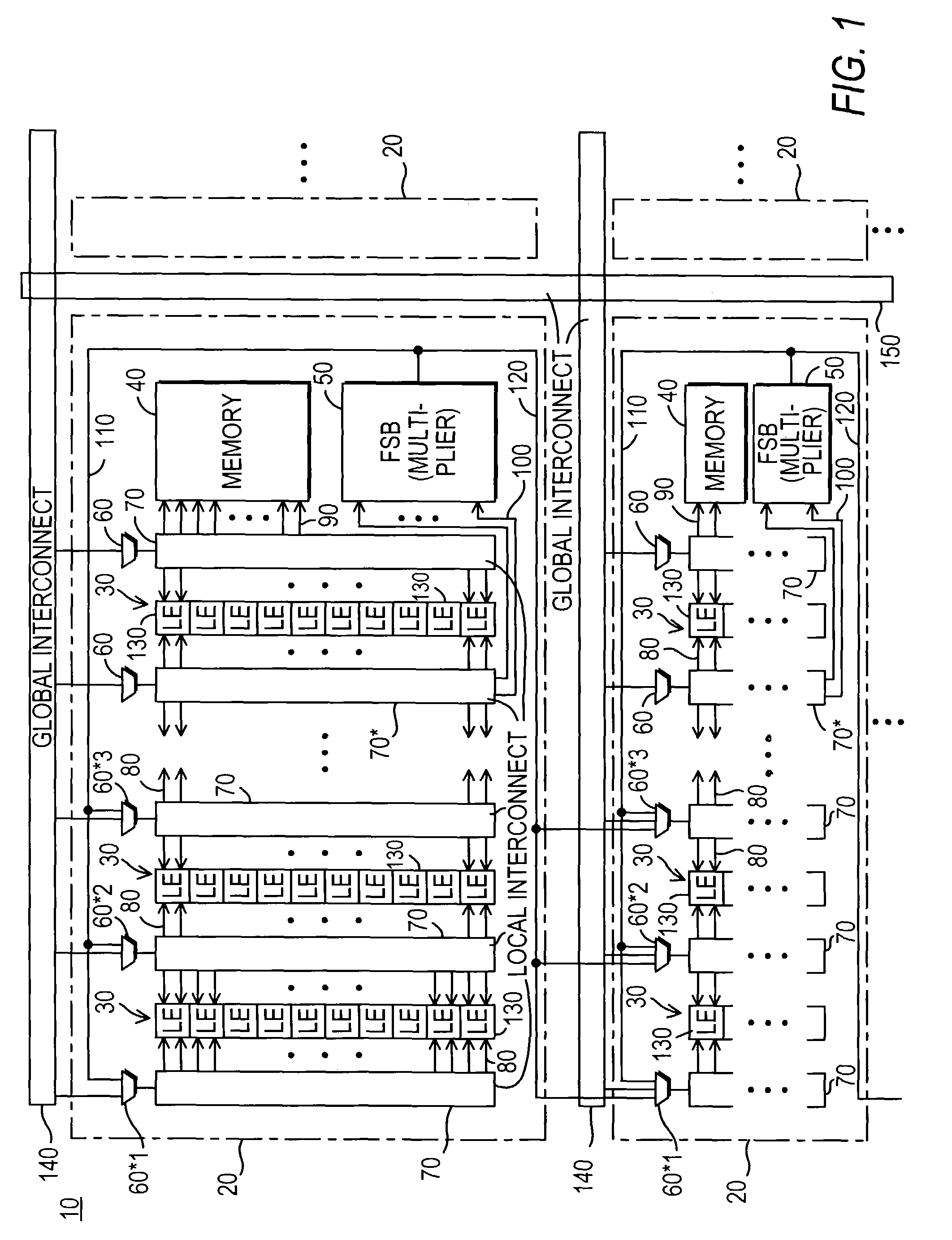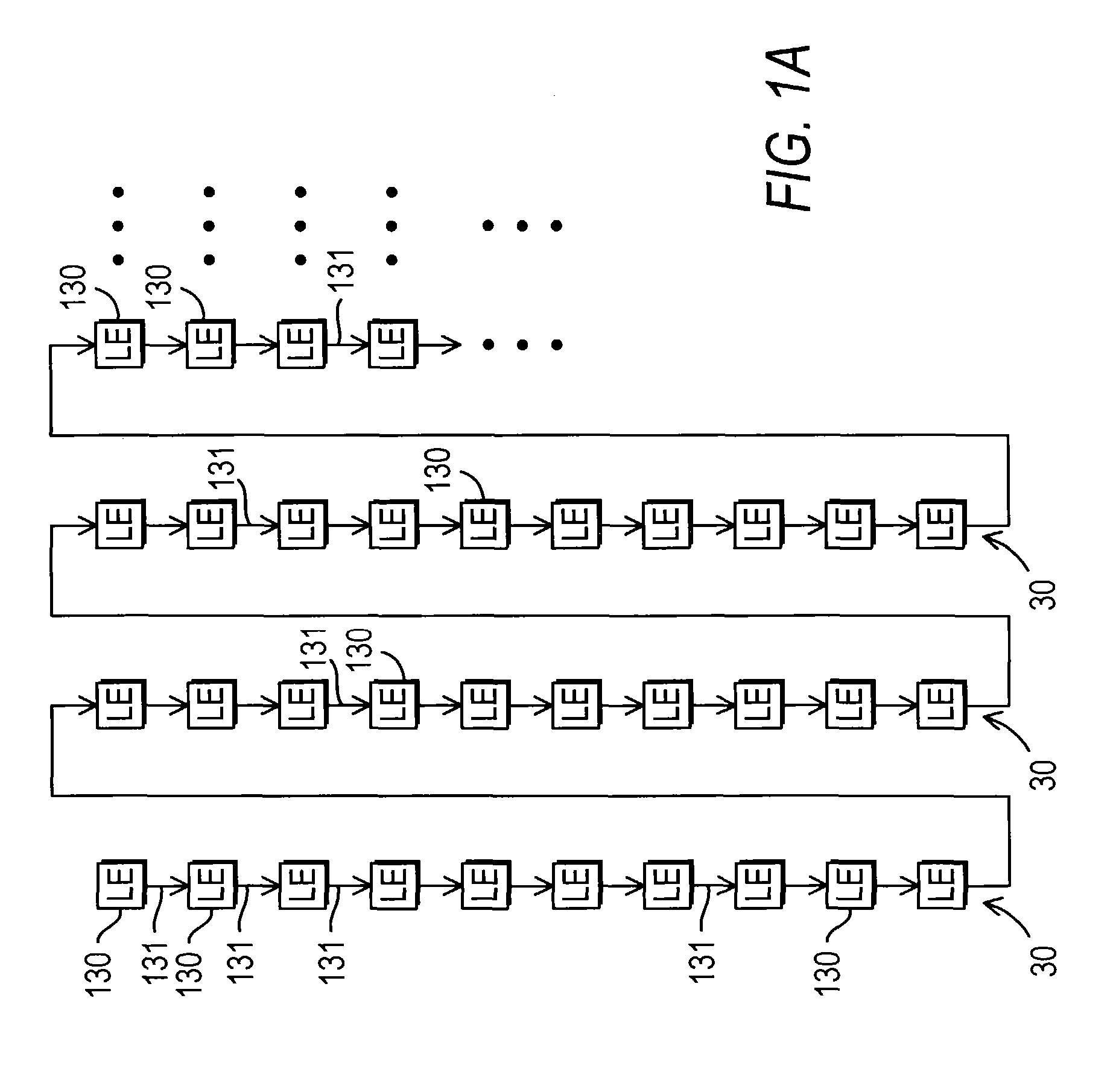Circuitry for arithmetically accumulating a succession of arithmetic values
a technology of arithmetic value and circuit, applied in the field of function-specific blocks, can solve the problems of “more expensive” to use a global interconnection conductor than a local interconnection conductor, and the slowness of global interconnection conductors, so as to reduce the impact of including fsbs, resource input may reduce or even sacrifice the usability of other resources
- Summary
- Abstract
- Description
- Claims
- Application Information
AI Technical Summary
Benefits of technology
Problems solved by technology
Method used
Image
Examples
Embodiment Construction
[0035]The invention will be at least initially described with greatest emphasis on inclusion of parallel multipliers in PLDs, but other examples of FSBs will also be mentioned and described, and from the overall disclosure it will be apparent to those skilled in the art how the invention can be applied to any of many different types and constructions of FSBs.
[0036]The illustrative PLD 10 shown in FIG. 1 includes a two-dimensional array of intersecting rows and columns of “super-regions”20 of programmable logic and other resources. Each super-region 20 includes a plurality of “regions”30 of programmable logic, a region 40 of memory, and an FSB50, which in this example is dedicated (i.e., at least partly hard-wired) parallel multiplier circuitry. Each super-region 20 also includes some relatively local interconnection resources such as programmable logic connectors (“PLCs”) 60, the regions of interconnection conductors and PLCs labeled 70, logic-element-feeding conductors 80, memory-r...
PUM
 Login to View More
Login to View More Abstract
Description
Claims
Application Information
 Login to View More
Login to View More - R&D
- Intellectual Property
- Life Sciences
- Materials
- Tech Scout
- Unparalleled Data Quality
- Higher Quality Content
- 60% Fewer Hallucinations
Browse by: Latest US Patents, China's latest patents, Technical Efficacy Thesaurus, Application Domain, Technology Topic, Popular Technical Reports.
© 2025 PatSnap. All rights reserved.Legal|Privacy policy|Modern Slavery Act Transparency Statement|Sitemap|About US| Contact US: help@patsnap.com



